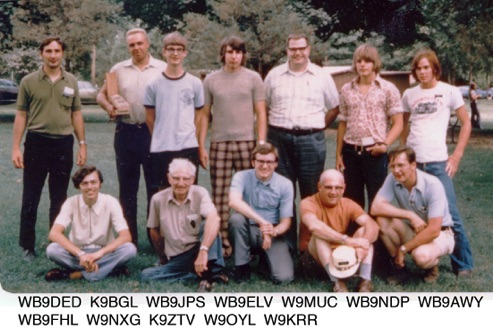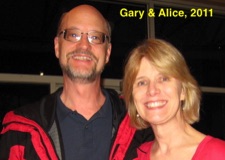Some Ancient History of WB9JPS
I got interested in ham radio by visiting a local ham while I was in fifth grade (~1969). Bill, WA9QNV (now KE4DK), was a great host and now that I think of it was incredibly tolerant of an nosy 10 year old! At the same time, I started learning Morse code from the WWII Radio Code Manual by Arthur Nilson, with an old tubed oscillator. My big break was in eighth grade when classmate Alice, ex-WN9GXO, told me about our local McHenry County Amateur Radio Club. Her father Gil, K9IQP (SK) soon became my novice instructor. In April, 1972, I got my brand-new call sign WN9JPS and got on the air with a Heathkit HW16, a few crystals, and an 80/40/15 meter dipole up about 20 feet.
WN9JPS, circa 1972. In the middle is a Lafayette general-coverage receiver and on the left is an “All-American 5” tubed radio that I somehow managed to repair. On the shelf is my tubed code practice oscillator, found at a rummage sale of all places.
Elmers
I owe a lot to the guys who got me started and helped me along. Remember, this is the hobby that eventually turned me into an engineer. Here are a few of them:
Gil, K9IQP (SK) My first ham radio teacher.
Jack, W9MU (ex W9KDX) Another of my early teachers who helped me prep my first rig and get on the air. He also gave me key advice about going into EE.
Steve, AA6AP (ex W9MUC) A big influence on me in engineering and a great personal instructor and mentor in analog, digital and RF electronics. Also got me into high-end audio. I really looked up to Steve in so many ways.
Moving Up
With the help of ongoing classes in our club, I moved quickly to General, Advanced, and eventually Extra while I was in High School. Getting my General was forced by a shortcoming in my poor little HW16 receiver: Whenever the ham down the street was on the air, I was off because my receiver would block. Couldn’t hear a thing, just an odd hum on top of his devastating signal. Well, I needed a better rig, one with a VFO and all the trimmings. Dad said he would buy me such a thing if I upgraded my license. The deal was done, and I ended up with a used Drake TR-4 with a second VFO so that it could operate like separates. Now that was a Cadillac rig for a 14 year old! Dad also located a 40-foot tower that someone didn’t want any more, so we got it for free. But the labor wasn’t free... that thing was all rusty, so it was my job to wire-brush the rust, prime and paint it, and dig a gigantic hole for concrete. We also located a used 3-element beam, and up with went. What a great setup, and I sure learned about working for what you want.
The Traffic Net Years
I really got hooked on the CW traffic nets (the National Traffic System) as soon as I got me General class license. W9MUC was Route Manager for Illinois; that must be how it happened. For several years, every evening was spent on our nets: ILN, 9RN, and CAN. My CW proficiency soared, as you can well imagine. One detail you experienced CW operators can appreciate: My TR4 only had an SSB filter, 2.4 kHz wide. I never had a CW-bandwidth filter, ever! Below is a photo from the ILN picnic, in 1973 or 74. We were all very good friends. 50 years later, I'm still in touch with a few of them, though many have passed on.
Later Years
Between college an moving out to California, ham radio fell by the wayside to a great degree, though I did manage to get on the air from time to time with various temporary antennas. I had a nice rig: Drake R4-B and T4X-B, sold to me by my old friend Alan, WB9JTK. I eventually donated that equipment to a local High School student who, just like me, was working his way up the license chain. Full circle!
These Days
In late 2014, I got my new 6-land call, NA6O. Out in the garage shop, I had a small corner set aside as an operating position but RFI became incapacitating, so I now operate 100% remote to W6SRR. I prefer to spend all my time on CW, and I really look forward to grabbing the paddle (or bug). That’s probably because of my upbringing on the traffic nets. I enjoy chasing DX and do my best in all the CW and RTTY contests. Sometimes I sit in at the N6RO superstation and enjoy having a really loud voice in the big contests.
Station engineering and construction is something I enjoy a lot and between W6SRR, N6RO, and a couple of others owned by friends, it keeps me quite busy. Writing articles and making presentations to clubs near and far is also rewarding and lets me give back to the ham radio community.








Message generator that I built in high school, to match the Drake equipment